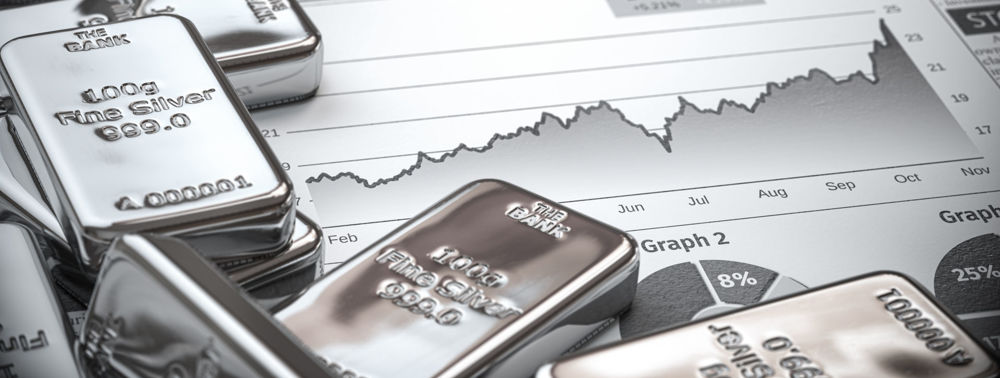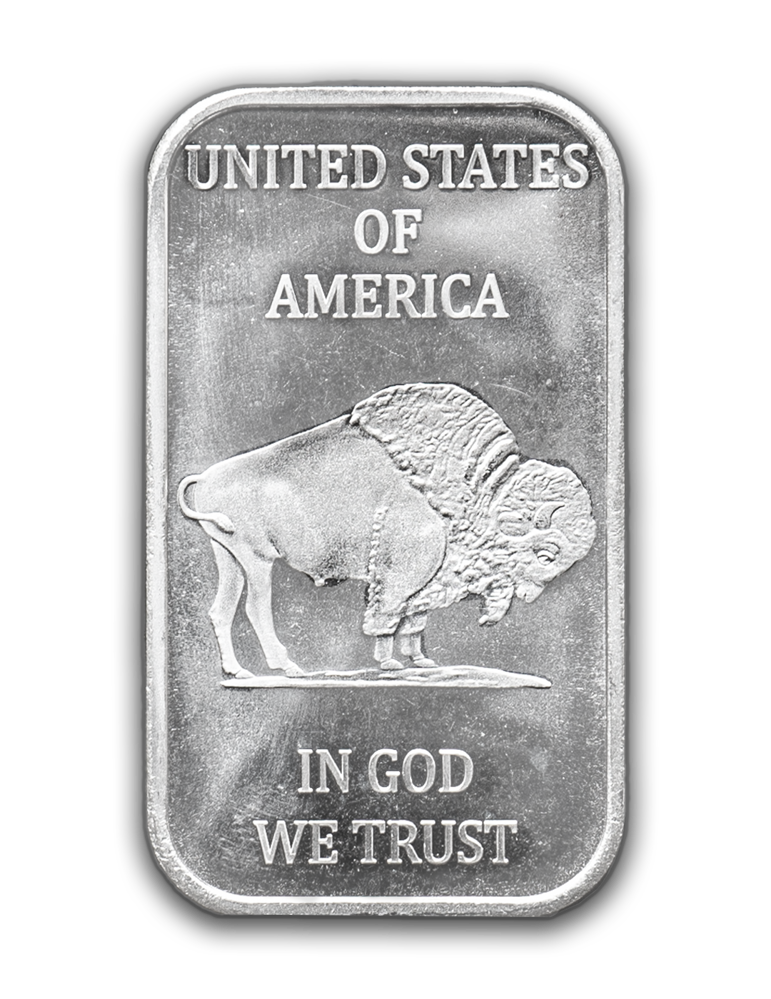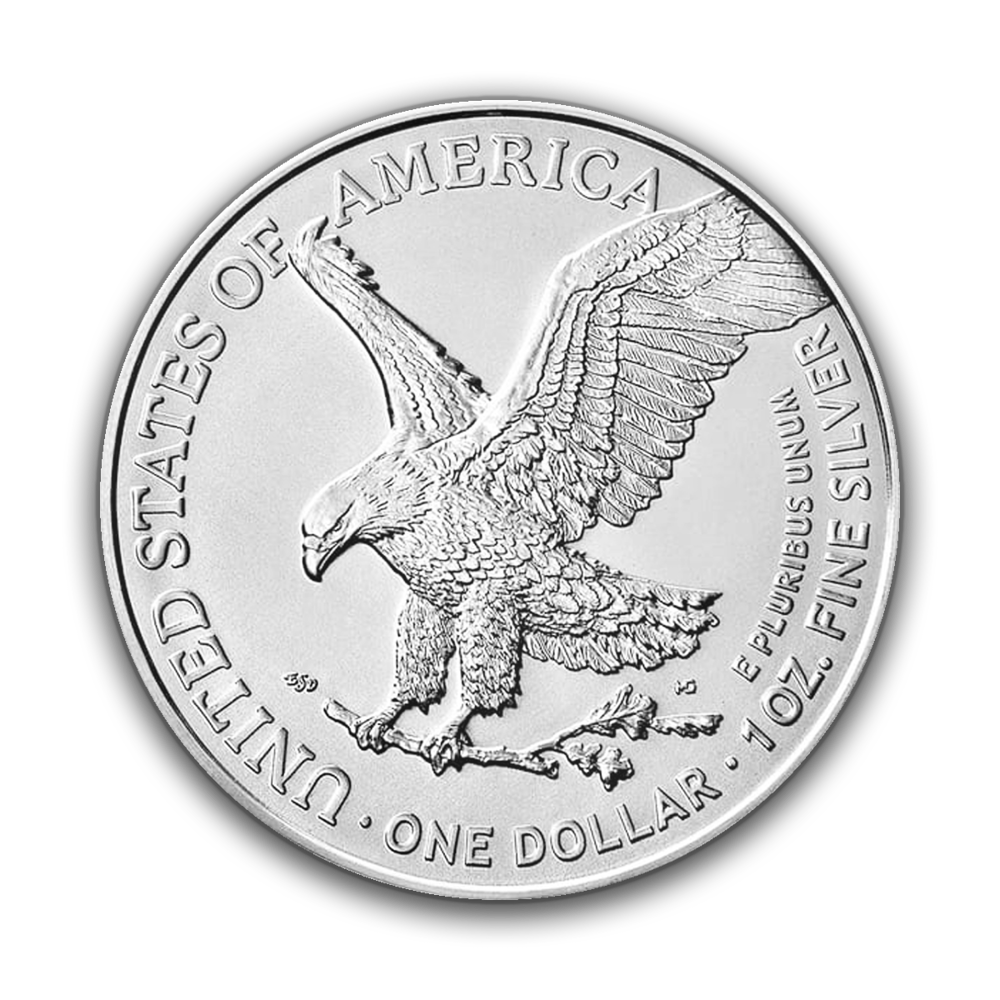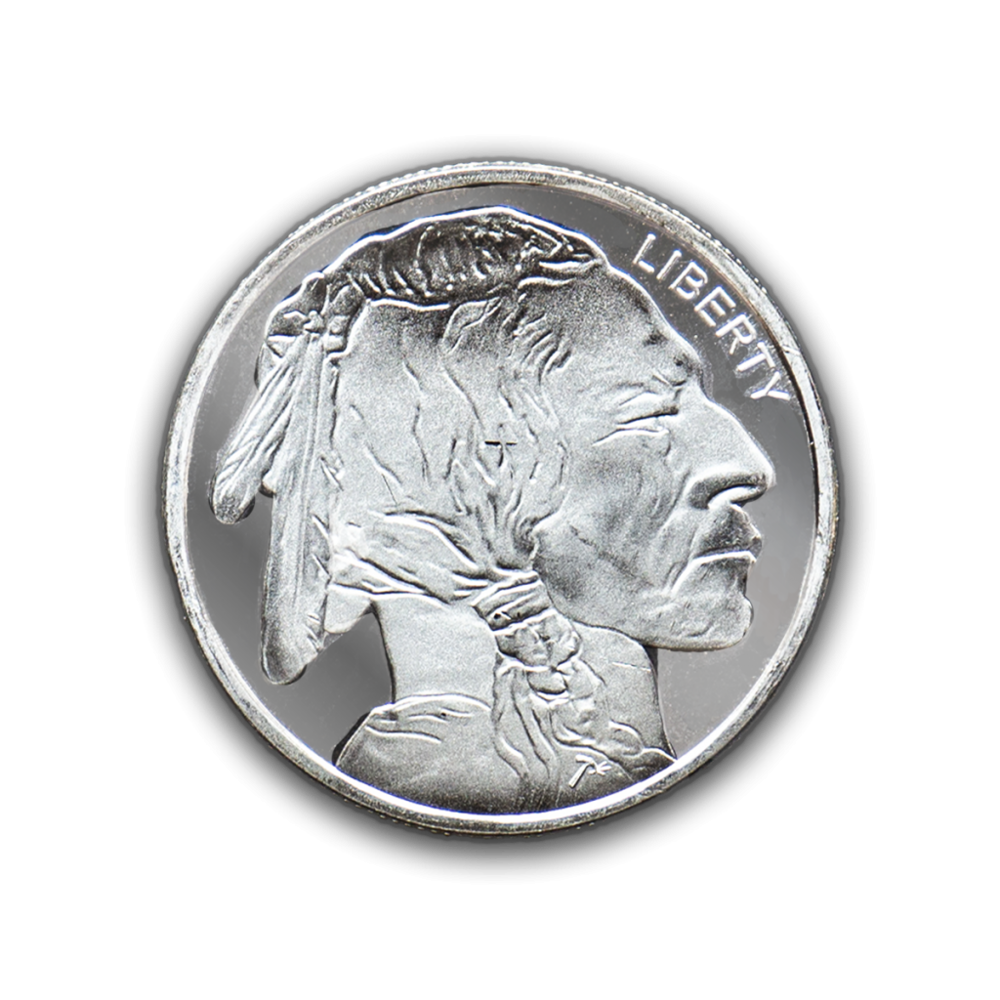Posted on February 09, 2022


Silver is sold in several different forms and each has its benefits and drawbacks, so choosing which silver is best to buy can be a challenge. Silver is not only incredibly popular but the most affordable precious metal. Deciding the best silver for yourself can seem daunting. To help you through the buying process, it’s best to understand valuable information, tips, and questions you should ask before buying silver.
Silver, like gold, is considered an excellent hedge against inflation. When government currency loses purchasing power due to inflation, commodities including precious metals like silver tend to maintain their value. In some cases, silver can even appreciate, especially when demand increases. Silver is an incredibly popular choice for precious metals investment. For example, in 2021 alone the U.S. Mint produced over 27 million 1 oz American silver eagle coins, sixteen times more than all four weights of American gold eagle coins combined.
Silver isn’t just popular for investment, though. In addition to its use in jewelry, silver is a very useful metal in medical and dental health, electronics and batteries, and more.
Along with its value as a precious metal and its variety of practical industrial applications, silver also offers the benefit of being significantly more affordable per ounce compared with other precious metals like gold, platinum, and palladium. For example, at the time of writing, a 1 gram gold bar (about 1/30th of a troy oz) costs about the same as three 1 oz Canadian silver maple leaf coins. In other words, silver is by far the most accessible precious metal.
The different kinds of physical silver include silver jewelry, bars, coins, rounds, and what is colloquially known as junk silver.
Silver jewelry comes in various forms and purity and is easily found at just about every jeweler. Silver jewelry is usually made from “sterling silver,” 0.925 pure. There’s a remarkable number of forms of silver jewelry, from chains and rings to body piercings. Generally speaking, silver jewelry’s price is only partially based on its precious metal content. Aesthetics, collectability, brand name, popularity, and many other factors in silver jewelry prices are at work. For these reasons, silver jewelry isn’t usually considered an investment; instead, buying silver jewelry is a purchase.
Silver bars are ingots ranging in size from 1 oz to 1,000+ oz (68.5 lbs), generally made of nearly pure silver (0.99 or higher). Silver bars typically sell for a low premium over the spot price of silver. Silver bars may be cast and have a rough, unfinished and industrial look, or minted: decorated and polished for greater eye appeal.
Silver coins are minted by a government and have an official face value (though it’s a small amount that is usually a fraction of the value of the silver in the coin). Silver coins may be proof coins that are limited-edition, superior-quality coins prized by collectors, or bullion coins which don’t benefit from the extra steps taken to mint a proof coin. In some cases, rare silver coins can fetch a far higher price than the value of their silver, thanks to their numismatic qualities, which collectors prize. “Numismatic” means “coin collecting,” which we use to generally indicate “factors unrelated to the coin’s precious metal content that affect its value.”
Of these three types of coins, bullion coins sell most nearly the spot price of silver. Proof coins are priced higher based on the additional labor and effort taken in their production. Numismatic coins are valued based on several factors (rarity, popularity, condition, provenance, and so on) that have nothing to do with the coin’s precious metals content.
Silver rounds can look almost exactly like silver coins. However, silver rounds are made by private mints (“private” in this case means privately owned, in other words, not a government mint). Silver rounds do not have a face value. Sometimes silver rounds are designed to resemble other coins (there are many silver round replicas of the famous buffalo nickel, for example). In the U.S., there are guidelines to prevent excessive confusion between silver rounds and government-issued coins. . Some silver rounds are remarkable works of numismatic art, painstakingly designed and minted. Others aren’t much more than a disc stamped with a refiner, a weight, and a purity. Since there’s such a diversity of silver rounds, it’s difficult to say how they’re priced.
Junk silver is a broad term used to describe circulation coins minted in 35%-90% silver and are generally sold by the bagful. Junk silver coins are priced by weight, and as such, their value is driven by their precious metal content. Coin dealers are extremely unlikely to overlook a rare or collectible coin, so don’t buy junk silver hoping you’ll turn up a rarity worth more than you paid.
The type of silver you choose to buy is a personal choice based on your goals and preferences. In some cases, like when a person wants to wear silver, jewelry is the only option. Be honest with yourself, though – your silver jewelry is probably a purchase rather than an investment.
If you’re interested in buying silver bullion as an investment or for potential resale, let’s break down each type and evaluate its pros and cons.
 Silver bars generally represent the most cost-effective form of silver bullion. If you’re buying silver bars or ingots, you’re probably interested solely in the intrinsic value of silver as a metal.
Silver bars generally represent the most cost-effective form of silver bullion. If you’re buying silver bars or ingots, you’re probably interested solely in the intrinsic value of silver as a metal.
Most bars are rather similar in shape and design, bearing only the necessary information like the refiner’s stamp, the denomination of the bar, and the fineness of the silver. As mentioned above, there are some differences between industrial cast bars and finished, “minted” silver bars. Here’s a rule of thumb: The nicer the silver bar looks, the greater a premium you should expect to pay.
Silver bars are also available in the widest range of weights, most typically 1 oz, 10 oz, and 100 oz – though they go all the way up to 1,000 troy oz. Another rule of thumb: larger bars tend to have lower premiums than smaller bars. A single 100 oz bar is almost always a better value than ten 10 oz bars or one-hundred 1 oz bars.
Look to silver bars if you want to buy silver at the best price per ounce and choose from the widest variety of sizes.
 Silver coins, produced by a government mint, are also a very popular choice for buying silver. While coins are among the most expensive ways to buy silver, they are considered the most liquid because they’re easily recognized and can be used as currency. Because governments mint them, there’s an explicit guarantee (face value) and an implicit guarantee (an official government mint would never cut corners or offer a substandard product).
Silver coins, produced by a government mint, are also a very popular choice for buying silver. While coins are among the most expensive ways to buy silver, they are considered the most liquid because they’re easily recognized and can be used as currency. Because governments mint them, there’s an explicit guarantee (face value) and an implicit guarantee (an official government mint would never cut corners or offer a substandard product).
In addition to their face value and intrinsic value (the value of the coin’s silver), coins are unique because some, especially proof coins, may gain numismatic value as collectibles.
Choose silver coins if you want the greatest liquidity (ease of resale), are interested in the coin’s collectible value, and don’t mind paying a little extra for these added benefits.
 Rounds are another great way to buy silver bullion at a price that’s minimally marked up from the spot price. Some silver rounds are also produced as collectible works of art rather than as investment silver, so some issues may be priced at a premium.
Rounds are another great way to buy silver bullion at a price that’s minimally marked up from the spot price. Some silver rounds are also produced as collectible works of art rather than as investment silver, so some issues may be priced at a premium.
When comparing rounds with bars, rounds will have fewer weights to choose from, though the difference ultimately comes down to personal preference.
Although it has a discouraging name, junk silver is actually an interesting investment that combines some of the benefits of coins and silver bullion. Junk silver consists of old circulation coins minted of an alloy containing as much as 90% silver. Since they’re usually heavily worn from use, these coins are generally not attractive to collectors. Still, junk silver is legal currency, highly liquid, and still offers the intrinsic value of the silver it’s made with.
Generally speaking: silver bars offer the lowest premiums over spot price, followed by silver rounds (with caveats mentioned above), then junk silver, then silver coins, and finally proof coins.
You’re most likely to opt for coins or possibly bars if you're a collector. Collectors see silver bullion as more than a precious metal. To numismatists and coin enthusiasts, silver coins and (occasionally) bars and rounds can be works of art.
The premium will be the main factor for the investor since the objective is to purchase as much silver as possible while paying the lowest price.
For those interested in a precious metals IRA that includes silver, knowing what limitations are attached to silver IRA investing is essential. Precious metals kept at home can’t be part of an IRA, though you can own silver bullion in a self-directed IRA (SDIRA). But it has to be stored at an approved depository. In addition, you can only invest in precious metals of a certain fineness in an IRA. You can learn more about the IRS requirements for precious metals IRAs on their website.
Another factor to take into account is where you will store your silver bullion. Do you plan on keeping your silver at home, or will you entrust it to a bank or depository? Precious metals depositories offer allocated and unallocated storage. If the storage is allocated, your silver is stored separately, and when you withdraw it from the depository, you get your exact silver back.
On the other hand, your silver is mixed in with other similar silver bullion with unallocated storage. So, if you store 50 American silver eagles in unallocated storage, they will be mixed with other silver eagles, and you are unlikely to get the same exact ones when you withdraw them.
Suppose you’re planning on using a depository to store your bullion. In that case, keep in mind that with unallocated storage, you might end up with someone else’s comparable bullion rather than the exact pieces you deposited (you can, of course, always pay extra to have your own dedicated storage space).
A substantial amount of silver can take up a surprising amount of space, which is something you might have to take into consideration before purchasing. Certain types of bullion are more space-efficient than others and can be neatly stacked, which might come into play if you have limited storage space.
Many other factors can help determine which silver is best for you to buy. These include but are not limited to weight, brand, fineness, availability, and spot prices. There are dozens of refineries and mints that produce slightly different products, which gives you something to think about when weighing your options. Of course, like all other commodities, you’ll have to account for availability at the time of purchase as well as the spot price of silver, both of which will influence the price of silver bullion on a broader level.
The type of silver bullion you buy has to fit your needs and be a personal choice. Your goals as an investor or collector, the availability and pricing of silver, how and where you intend on storing it, and how much silver you’re buying will all play a role in concluding which silver is best for you. The critical thing to remember is that there’s no one-size-fits-all answer, but silver has long been considered a very useful metal, a great store of value, and a hedge against inflation. Click here to see a complete list of BullionMax’s silver for sale.